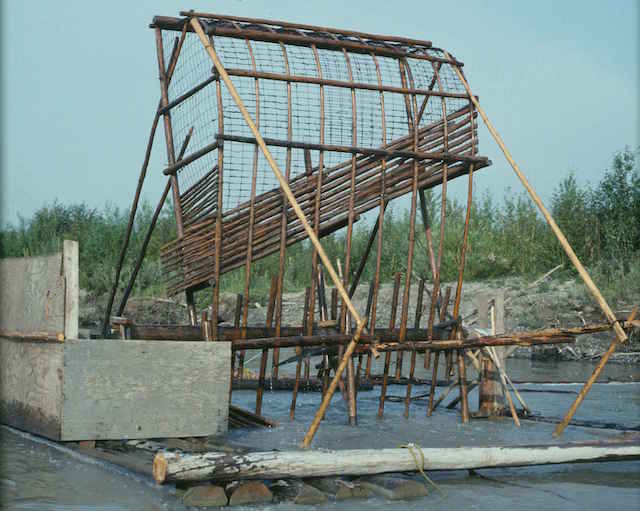Newly returning to student status and having been working within a number of disciplines that do not encourage colorful or heartfelt sentiments in writing I am hoping to be able to make the necessary adjustments to ‘spruce’ up my writing a bit. Reflecting upon my days in middle school so many years ago I do recall that I was fortunate enough to have several caring and compassionate teachers. Despite their caring,and in some cases, I was unreachable, however I have some of my fondest memories of two in particular that pushed me and let me figure some things out on my own then they pushed again and again. They were relentless in their resolve and for that I am forever grateful. Although I did not see it that way then, looking back I recognize the passion, determination, persistence, patients, and caring that drove good teachers to work each day, to press on, and into the resistance of adolescent rebellion. They clearly did not require a breakthrough moment nor were they going to get one. They did make one hell of an impression though and look at me now; thirty years have passed and I’m still thinking of them. Funny really, I want to do what they were doing; helping others find their way. At a distant starting point, staying true to themselves yet reaching deep to make contact to their student’s inner teacher, I only hope my heart can take it.
Author: Matt Bowes
680 Final Reflection
1)My understanding of culture and power have undoubtedly changed over the course of the past three weeks. I am undergoing an awakening of sorts, an awakening to some previously unnoticed deficiencies and/or outright injustices in how the ‘rules of the game’ impact people from cultures that are not aligned with those of the mainstream. I have also become aware of my own misconceptions, and prejudices that have been instilled in me. I acknowledge my responsibility to actively remedy these and to insist that others do the same. I understand that we are products of our environment, the sum of our experiences and the experiences of those which influence us. This is in total is culture. I have always known that words used by great speakers could be powerful, but I was not aware of the profound power of simple words from seemingly less influential people. I will need to be diligent, cautious, and caring in how I use my words with others as the can significant downstream effects.
2)Initially seven words came to mind and I’m not sure they were all on the wall but they were spoken several times over the course of the last few weeks. My list: Hope, Power, Advocate, Be’Ing, Appreciate, Love, Determination. Picking three:
Hope: To want something to happen or be true and think that it could happen or be true (Merriam-Webster) simple definition.
I believe change is needed and I believe it is possible.
Determination: A quality that makes you continue trying to do or achieve something that is difficult (Merriam-Webster)
I’m going to need this to help bring about that positive change to occur.
Be’Ing: The most important or basic part of a person’s mind or self. (Merriam-Webster) The act of being present in mind and spirit. (as I interpret it)
Will need to be present to help prepare children to make a better world.
3) I plan to do my best to include culturally relevant materials whenever possible. I can see the connections between the disciplines of earth science and the knowledge need to function outside of the classroom in the natural world. I will continue to actively educate myself so that I am better able to assist in other’s education. The strategies I will employ will include hands on activities using common and or familiar materials to better illustrate the objectives of the lessons at hand. Lessons I could put forth to meet cultural and state science standards would include discussions related to natural phenomena like volcanoes, glaciers, earthquakes, rock and mineral formation/ identification, streams/ groundwater, erosion, weather, seasons, evolution of life, ecosystems, fish, birds, mammals, and the list continues. We can tackle whatever time and tide allow.
PBL notes on teaching tools
The teacher in me learned that “project-based learning” is not just dumb phrase someone coined to sell some books
This was certainly a departure from the traditional style of ‘learning’. No note cards or endless pages of scribbled factoids clogging up the lines of some ruled notebook pages. I did not miss the ubiquitous 20-page research paper on some mundane topic that only its only worth-the points. Nor did I miss the cramming for an exam that only displays my ability to spit back those facts I scribbled down on that notebook page last week only to forget most of what I only ‘learned’ shortly thereafter . I did however come away with an appreciation for a fresh idea of learning through collaboration in an investigative effort.
We certainly learned a lot about a fairly narrow scope of information individually, then broaden slightly through discussion within our group and broader still with other groups. I’d say we all shifted a little closer toward ‘expert’ in our respective field of investigation for the introduction sections we were responsible for. Aside from in depth and the narrow scope of learning through research and synthesis. I felt that another type of learning took place, through discussion with those who had recently undergone similar acquisitions of knowledge, but in different areas whether regional, cultural, or both.
As a lesson in becoming a historian, gathering information from available sources, sorting out the misinformation, filtering for bias, and synthesizing to the best of your ability the correct story I see this as a goal achieved. We also engaged in the process of peer review that wore an editor’s dress. It took me some time to catch that but this too is part of the process and is incredibly valuable in that if done well it prevents further misrepresentation of ‘fact’ and protects the credibility of your voice.
M
What’s a boat to do
*Don’t have a full 41 sec. to spare… jump to 24 sec. and hold your breath.
Alaska’s culture is inherently linked to boating culture. We are and have often been bound by our ability to move across or on the water. Overshadowed by air travel and often overlooked is the profound impact boating technology has on all of this state’s residents and billions of people worldwide. Here at home store shelves stay stocked only if the barge arrives on time, reaching the road system usually requires a ferry, and harvesting a winter’s worth of halibut or salmon is exceeding difficult without a boat assist. Travelers, adventurers, and rural residents today rely on boats of all shapes, sizes, and propulsion methods to reach their respective destinations. Whether it be a 18’ Lund shallow V, 35’ a bow- picker, or a 6lb. pack raft we love boats. Funny side note, boats need water; I love water, hence I love boats. Now you know.
My lesson plan has to do with our recognition of the simple fact that we are reliant on these crafts large and small for tasks for which they were designed and sometimes not. I have indicated, in my lesson, that several state standards are addressed whether it be scientific process of design, utilization of technological innovations, understanding properties of matter, developing an understanding of the interrelationships among individuals and their respective cultures, but I believe the lesson here is most closely tied to state standard F 3, which reads, “develop an understanding of the importance of recording and validating cultural knowledge”. I say this because the lesson contains an activity where students will make some comparisons between a contemporary modern kayak to a biadarka. The grandfather of the modern Kayak, the biadarka has been copied and has further evolved to meet the specific needs of people where ever they are in the polar region.
For more on this, see: http://www.traditionalkayaks.com/Kayakreplicas/types.html
The lesson first asks students to consider boats in general and how they (students) are connected to boats and their many uses. Then the students are asked to determine what features of a given boat make it useful for a particular application and how they know that. In small groups students will be in charge of their exploration to compare and contrast the two similar and describe them using the data collected. For more on that see the attached lesson.
M
Slides:
Keynote slides- boats
Poster Session CRT
For the Culturally responsive activity we were selected to explore the third, Standard C, in the suite. The standard:
“A culturally-responsive curriculum uses the local language and cultural knowledge as a foundation for the rest of the curriculum.”
Of the seven parts I believe our poster was, to me at least, best suited to meet standard C. 6. This standard states: Makes appropriate use of modern tools and technology to help document and transmit traditional cultural knowledge;
Our poster was a representation of a fish wheel built in more or less traditional manner. I think this exemplifies part 6 in that most fish wheels are rooted in the traditional values and methods yet incorporate modern technology and materials to accomplish the goal of feed the people. Moreover, the construction and use of fish wheel by subsistence users often are constructed by community members of multiple generations. There is passing of knowledge, not just of the fish wheel but of the fish, the river and the river environment.
I believe it would be an easy lesson to adapt to the classroom as the connections are between the indigenous knowledge and methods and can be viewed also through a western scientific lens whether form a and engineering or biological perspective.
Children’s storybook springboard
The Girl Who Swam with the Fish / Secret of the dance (Andrea Spalding and Alfred Scow)
Kathy Nielsen visited us to present some of her wisdom regarding engaging students in the classroom. Kathy is a strong advocate for reading to her students. That may really not seem too extraordinary, but the fact that she advocates reading children’s books to older students was, well, a little baffling at first. However, once she read aloud to us the book “Secret of the Dance” it was clear what she was doing. Beyond telling us about the benefits of a technique she modeled it. The reading pulled us in, created an access point to the topic in for those with little experience with the topic, and allowed us to momentarily adopt the perspective of the main character in the story. From this base we were able to launch into a brief discussion with regard to the meaning of the text and how it would be a great Segway into a deeper discussion.
Following we read though a few books on our own and were instructed to select at one that we would/could see ourselves using in our respective classrooms. I selected, The Girl Who Swam with the Fish by Michelle Renner. This story of a girl who wonders about the life and journey of the salmon that sustain here people is swept away by the very river she is monitoring in anticipation of the salmon’s pending return. All at once she is transformed into a fish and she is now experiencing the things she had wondered about and through the fish’s eyes, traveling to the sea and then returning to her home stream and to her village site. The tale ends with here safe return back as a little girl where she then shares her adventurous tale with her relieved and surprised family.
The tale would serve to discuss not only the importance of the resources around us, but also the importance of the salmon to the inhabitants the rely on the river for sustenance. This is significant today because of dwindling salmon stocks, combined with untold environmental stressors like habitat destruction, water pollution, acidification of the ocean, climate change, water diversion, over fishing, and the list continues. Highlighting these factors as a threats to the natural cycle and sustainable population of salmon is worth discussing with students and can be framed in, or approached from a multidisciplinary fashion.
Last word discussion of BH& H
Today we utilized a technique of texted-based reading incorporating a follow up exercise “The final word” where a round robin discussion took place amongst small groups focused on short sections Beyond Heroes and Holidays (BH&H). Each of the group members would identify the most significant or impactful segments of the reading section and relay to the group their thoughts and reasoning for bring said points to the discussion. After each group concluded their own discussion a class wide discussion would then take place. The goal: To reach a deeper understanding of the text through these discussions.
I found this exercise and discussion to meet that goal. Others in the group interpreted some passages differently than I did or were able to illuminate the importance of material that initially did not register with me. The major point of our section, Affirmation, Solidarity and Critique: Moving Beyond Tolerance in Education were the call to take the Monocultural education institution and transition them into a multicultural environment to creates access for all students to be successful. It is a call to elevate the current condition to what is outlined as a lofty but an achievable goal. Within our discussion group we felt that one key to implementation of this is to foster an urgent sense to think critically. Development of this skill is paramount for the success of a student, to ensure they are able to navigate coursework and their daily lives at a higher level. We discussed challenging to status quo and the power distribution as themes that run throughout this texts respective chapters. We also discussed the what ifs of a culturally responsive curriculum and the potential pitfalls for exclusion of some students while celebrating some other. All in all I believe the objectives of the exercise were met and we all took more away form a post reading discussion than simply reading alone.


